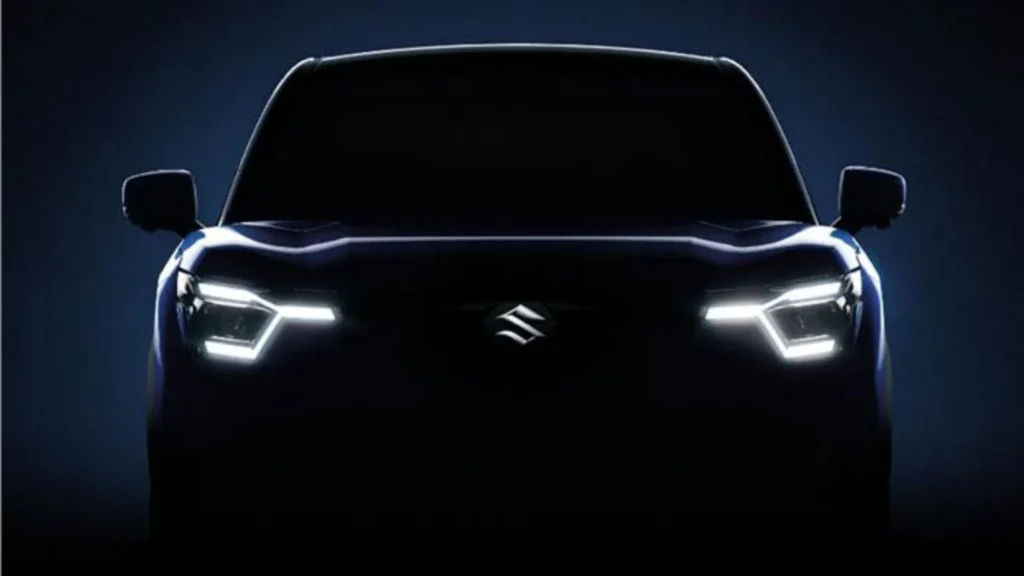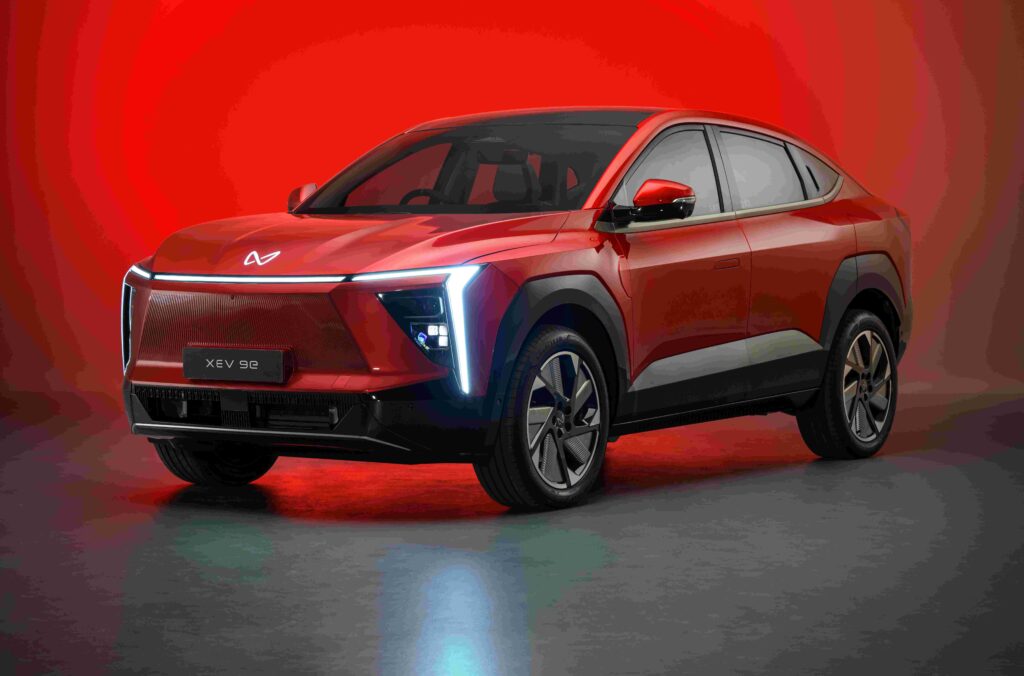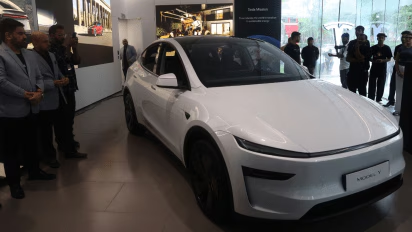Introduction
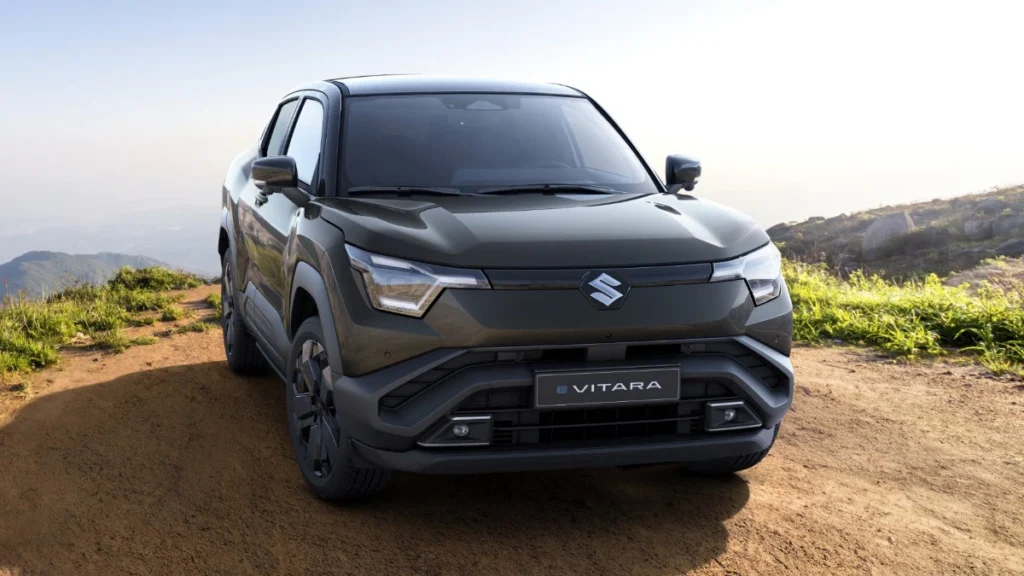
Maruti Suzuki, India’s largest automobile manufacturer, has taken a significant leap into the electric vehicle (EV) segment with the launch of the e-Vitara EV. This vehicle marks Maruti Suzuki’s first fully electric SUV, combining the trusted Vitara Brezza platform with a modern electric powertrain. With increasing emphasis on sustainability and the government’s push for EV adoption, the e-Vitara EV aims to capture a significant share of the electric SUV market in India.
The e-Vitara EV blends the practicality and appeal of the Vitara Brezza with the benefits of zero-emission driving, targeting urban commuters and environmentally conscious buyers who want a capable and affordable electric SUV.
Design and Exterior
The Maruti Suzuki e-Vitara EV retains much of the Vitara Brezza’s stylish and robust design but adds several distinct EV-specific touches.
- Front Fascia: The traditional grille is replaced with a sleek, closed-off front panel that is typical of EVs, improving aerodynamics. LED DRLs (daytime running lights) flank the front, with redesigned headlamps featuring LED projector units for enhanced illumination.
- Side Profile: The body shape remains muscular and sporty, with sharp character lines running along the doors. The e-Vitara EV comes with aerodynamic alloy wheels designed to reduce drag and improve efficiency.
- Rear Design: The rear features signature LED tail lamps and an EV badge. The rear bumper has subtle diffuser elements to optimize airflow.
- Color Options: Multiple exclusive EV-themed colors and two-tone paint options are available, enhancing its modern appeal.
Overall, the e-Vitara EV looks contemporary, rugged, and instantly recognizable as a Vitara model but with a clear EV identity.
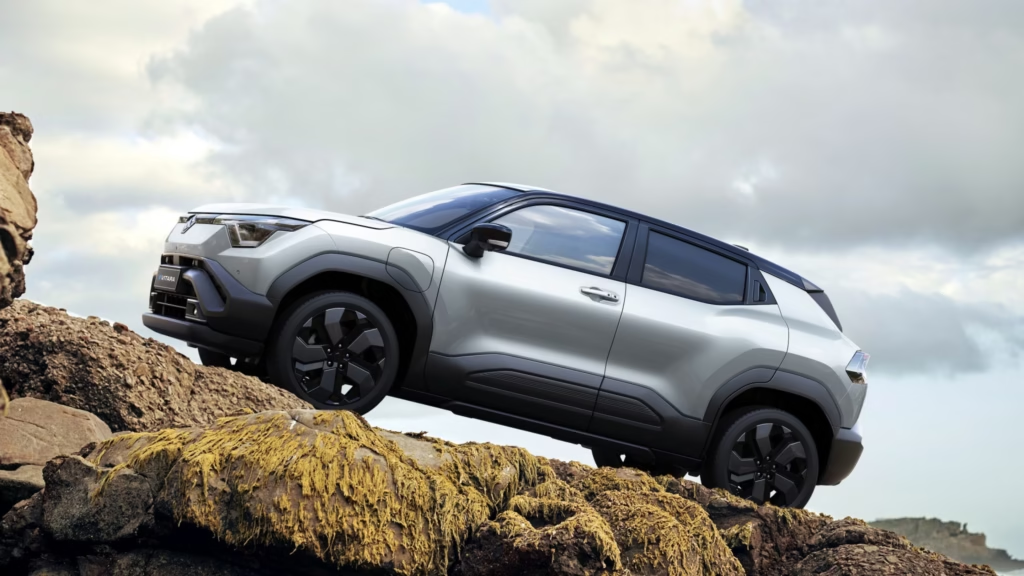

Interior and Features
Inside, the e-Vitara EV combines comfort, technology, and connectivity with a focus on a quiet, refined driving experience.
- Cabin Quality: The interior features premium materials with soft-touch plastics, leatherette upholstery on higher trims, and sporty stitching. Ambient lighting enhances the cabin ambiance.
- Infotainment: A large 9-inch touchscreen infotainment system with Apple CarPlay, Android Auto, and connected car features via Maruti’s SmartPlay Studio is standard. The interface is intuitive, with dedicated EV-specific displays showing battery status, range, and energy consumption.
- Instrument Cluster: The digital instrument cluster displays vital EV information like state-of-charge, regenerative braking mode, estimated range, and power usage.
- Space and Comfort: The e-Vitara EV offers spacious seating for five adults with ample legroom and headroom. Rear passengers enjoy adjustable AC vents and sufficient boot space, although the battery pack slightly impacts underfloor storage.
- Safety Features: It comes equipped with dual airbags, ABS with EBD, electronic stability control (ESC), hill-hold assist, and rear parking sensors as standard. Higher variants add a 360-degree camera, front parking sensors, and ISOFIX child seat anchors.
- Additional Conveniences: Features like a wireless phone charger, automatic climate control, keyless entry with push-button start, and cruise control are available on higher trims.
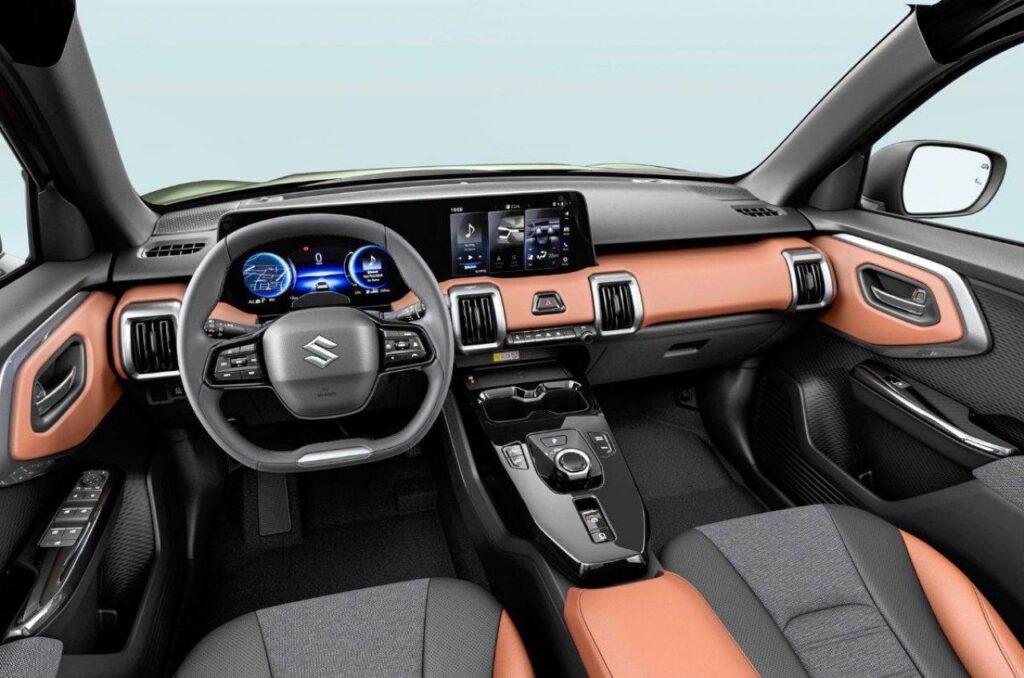
Powertrain and Performance
The core of the e-Vitara EV is its electric powertrain, engineered for urban and semi-urban use with efficiency and smoothness.
- Electric Motor: The vehicle uses a permanent magnet synchronous motor (PMSM) producing around 150 horsepower (112 kW) and 260 Nm of instant torque. This motor offers brisk acceleration, responsive throttle, and a quiet ride.
- Battery Pack: The e-Vitara EV is equipped with a 45 kWh lithium-ion battery pack mounted under the floor. The battery chemistry ensures a good balance of energy density, longevity, and thermal management.
- Range: On a single full charge, the e-Vitara EV delivers an estimated range of approximately 350 to 370 kilometers under standard test conditions, which is competitive for its segment.
- Charging:
- Fast Charging: The SUV supports DC fast charging, capable of charging the battery from 0 to 80% in about 50 minutes using a 50 kW charger.
- AC Charging: Using a 7.2 kW AC home charger, a full charge typically takes 7 to 8 hours, convenient for overnight charging.
- Driving Modes: It offers multiple drive modes such as Eco, Normal, and Sport, allowing the driver to prioritize efficiency, balanced performance, or spirited driving.
- Regenerative Braking: The e-Vitara EV features regenerative braking to recapture energy during deceleration, improving efficiency and driving range. The system is adjustable through paddle shifters behind the steering wheel.
- Performance Figures: The car accelerates from 0 to 100 km/h in roughly 8.5 seconds, making it peppy enough for city and highway driving.
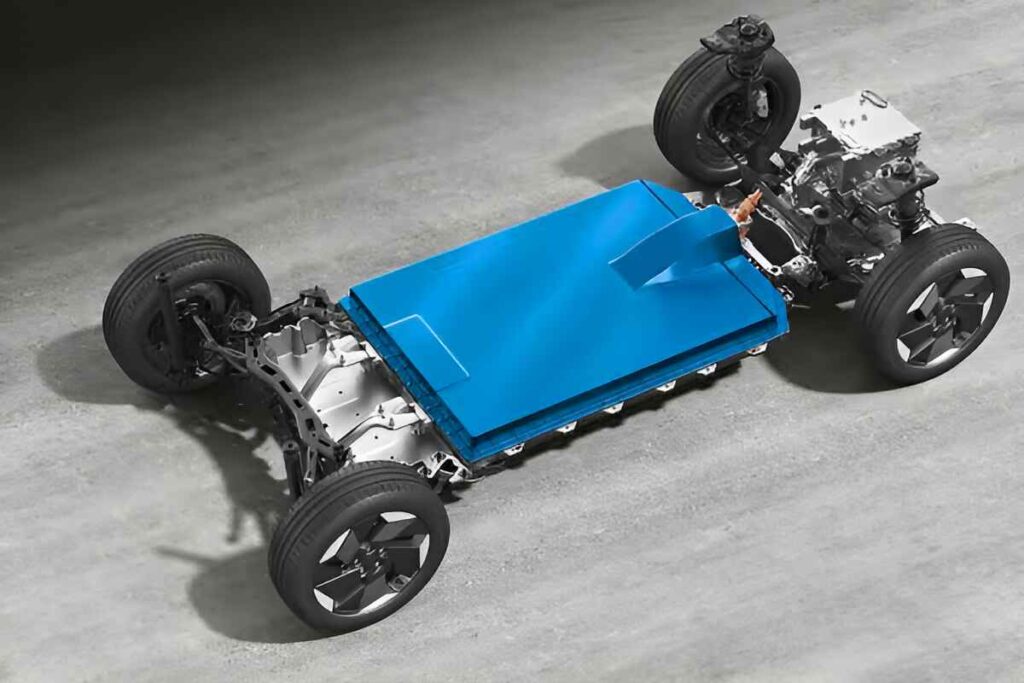
Suspension and Handling
- The e-Vitara EV utilizes a McPherson strut front suspension and a torsion beam rear setup, tuned for comfort and stability.
- The weight of the battery pack lowers the vehicle’s center of gravity, enhancing cornering grip and stability.
- Steering is electrically assisted, offering good feedback and precision in urban driving conditions.
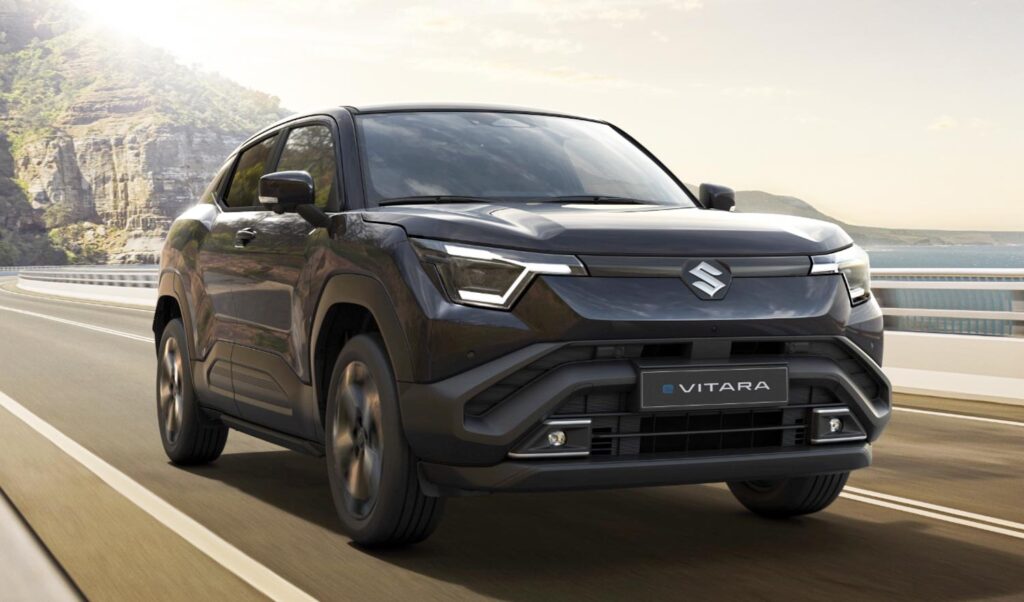
Pricing and Variants
Maruti Suzuki offers the e-Vitara EV in multiple variants to cater to different buyer budgets:
- Base Variant: Offers essential EV features, ABS, dual airbags, and basic infotainment.
- Mid Variant: Adds safety features like ESC, hill-hold, and enhanced connectivity.
- Top Variant: Comes fully loaded with all safety, comfort, and convenience features including the panoramic sunroof, premium audio, and larger alloy wheels.
Estimated price range: ₹16 lakh to ₹19 lakh (ex-showroom) depending on variant and location.
This pricing strategy positions the e-Vitara EV competitively against other electric SUVs and crossovers in India like the Tata Nexon EV, MG ZS EV, and Hyundai Kona EV.
Technology and Connectivity
- The e-Vitara EV supports over-the-air (OTA) software updates, ensuring the vehicle’s software can be improved without visits to service centers.
- Maruti’s connected car platform provides real-time vehicle status, remote monitoring, geo-fencing, and theft alerts through a smartphone app.
- Navigation integrates with charging station locators, helping users plan long journeys with charging stops.
- Voice commands and AI-based personal assistant features enhance the in-car experience.
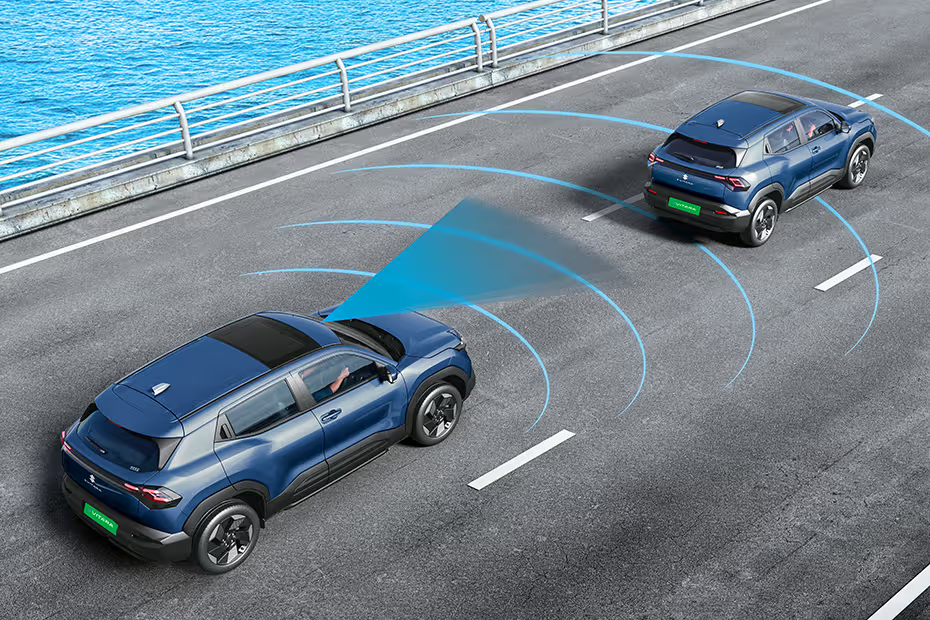
Safety Ratings
Although crash tests for the e-Vitara EV are awaited, Maruti Suzuki’s strong focus on safety with structural reinforcements and multiple airbags aims to meet or exceed global safety norms. Standard safety tech like ESC and hill-start assist improve driver confidence.
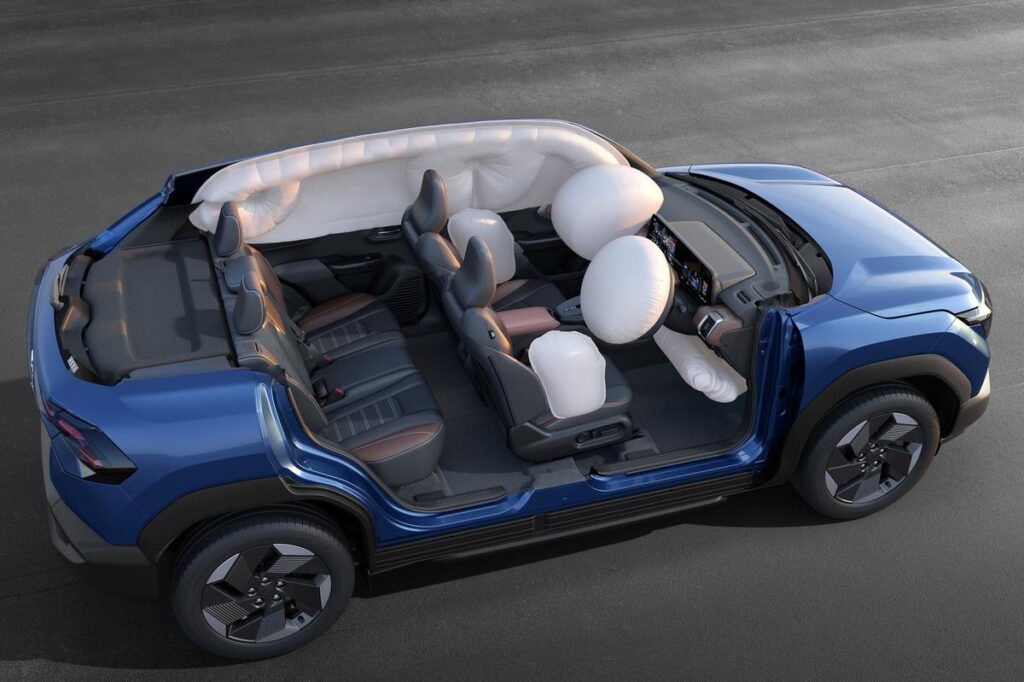
Environmental Impact and Benefits
- The e-Vitara EV produces zero tailpipe emissions, contributing to cleaner urban air.
- The vehicle’s energy-efficient electric motor helps reduce carbon footprint compared to petrol or diesel counterparts.
- Lower running costs: The e-Vitara EV benefits from reduced fuel (electricity) costs, minimal maintenance (no engine oil changes, fewer moving parts), and government incentives for electric vehicles.
- Noise pollution is significantly reduced with a quiet electric drivetrain.
Market Position and Competitors
Maruti Suzuki’s e-Vitara EV is a game-changer for the company and Indian EV market:
- Competitors: It directly competes with Tata Nexon EV, MG ZS EV, Hyundai Kona Electric, and upcoming EVs from new entrants.
- Strengths: Maruti Suzuki’s vast service network, brand trust, and affordable pricing offer a strong advantage.
- Challenges: Being a newcomer in the EV segment, Maruti will need to convince customers on battery reliability and charging infrastructure.
- Future Prospects: Maruti plans to expand its EV portfolio in coming years with more affordable electric hatchbacks and SUVs.
Conclusion
The Maruti Suzuki e-Vitara EV is a significant milestone for Maruti Suzuki’s electric journey. It offers a practical, stylish, and efficient electric SUV option for Indian consumers, combining the reliability of Maruti with modern EV technology. With a competitive range, advanced features, and attractive pricing, it aims to accelerate EV adoption in India’s growing electric mobility landscape.
